TIANJIN, June 12 (Xinhua) -- China has over the past few years stepped up efforts to breathe new life into long-established brands, preserving and improving traditional techniques, improving online and offline integration, and strengthening brand protection.
Time-honored brands, or "laozihao" in Chinese, is a coveted title given to brands with a long history. There are a total of 1,128 existing time-honored brands recognized by the Ministry of Commerce (MOC).
Tianjin alone is home to 66 such brands recognized by the MOC.
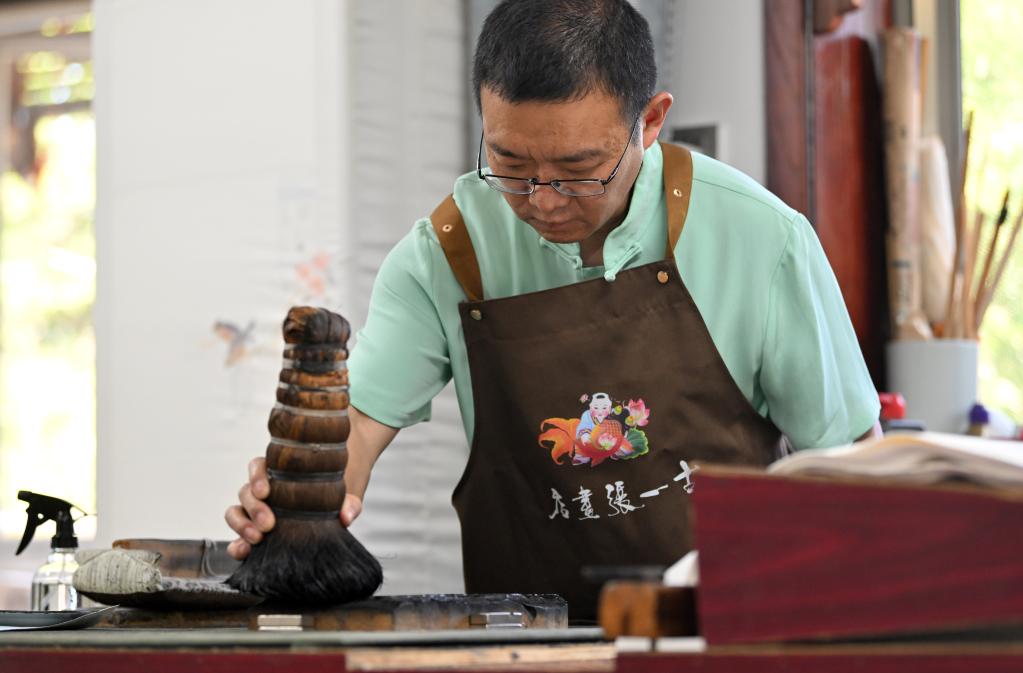
Huo Shulin inks a painting at a store of Yangliuqing New Year Paintings in Xiqing District of north China's Tianjin, June 6, 2023. (Xinhua/Li Ran)

Huo Shulin (R) and his wife Wang Dan paint at a store of Yangliuqing New Year Paintings in Xiqing District of north China's Tianjin, June 6, 2023. (Xinhua/Li Ran)
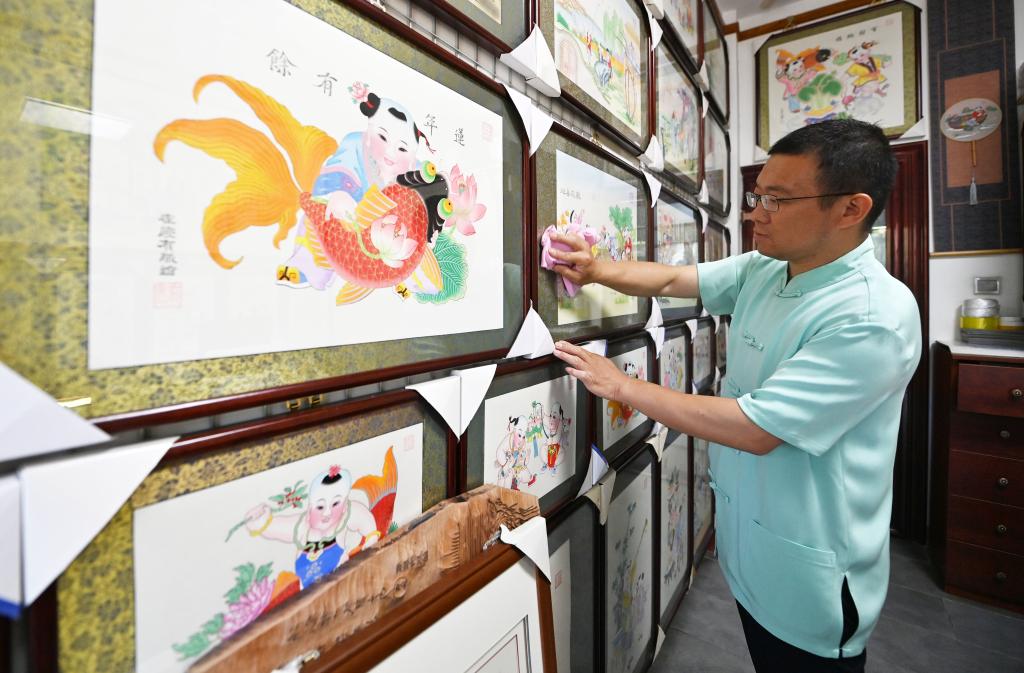
Huo Shulin cleans the frames at a store of Yangliuqing New Year Paintings in Xiqing District of north China's Tianjin, June 6, 2023. (Xinhua/Li Ran)
The Yangliuqing woodblock painting was one of the most popular forms of New Year decorations in China, which flourished in Tianjin and the surrounding areas during a period between the late Ming Dynasty (1368-1644) and the early Qing Dynasty (1644-1911).
Huo Shulin, 42, is the seventh-generation inheritor of Yangliuqing New Year Paintings. He began to learn the art from his father Huo Qingyou, a national-level inheritor, when he was ten years old. Over the years, he has collected ancient paintings and set up a museum of Yangliuqing New Year Paintings. Nowadays, Huo Shulin and his wife Wang Dan, who is also an inheritor, combine the elements of Yangliuqing New Year Paintings with modern culture, and design products deeply loved by young people.
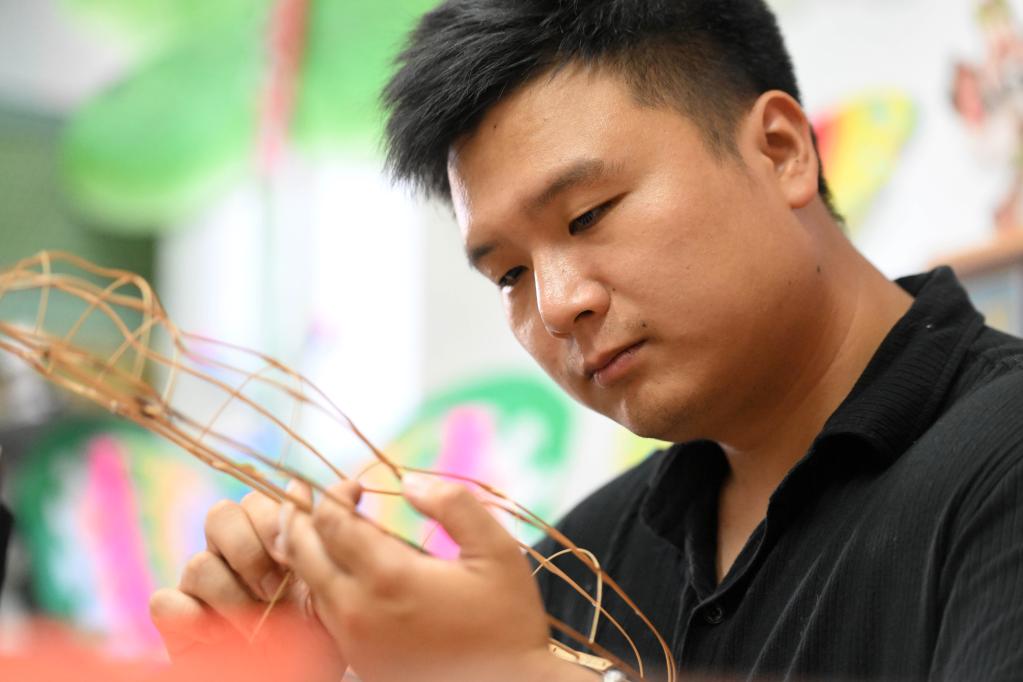
Wei Bowen makes a kite framework at his studio in north China's Tianjin, June 8, 2023. (Xinhua/Zhao Zishuo)
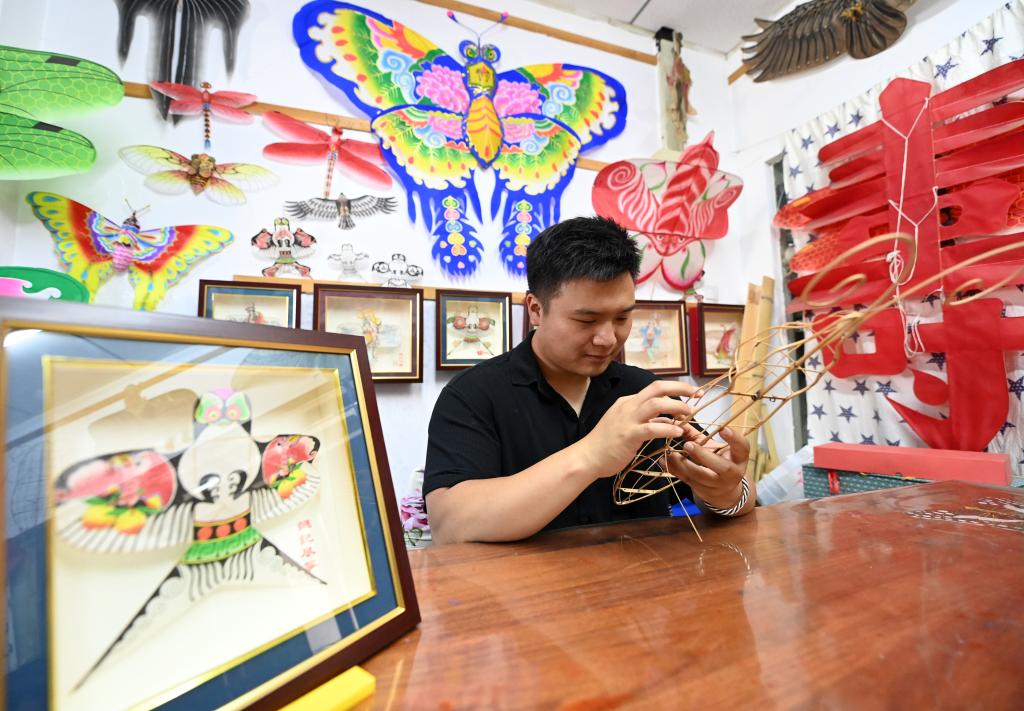
Wei Bowen makes a kite framework at his studio in north China's Tianjin, June 8, 2023. (Xinhua/Zhao Zishuo)
Kite-making has been a traditional Chinese folk handicraft in north China. Tianjin Kite Wei was listed as a national intangible cultural heritage in 2008.
Wei Bowen, 29, is the fifth-generation inheritor of Kite Wei. After graduating from university, he returned to his hometown to make kites with his father Wei Guoqiu, the fourth-generation inheritor of Kite Wei. In recent years, he has added fashion elements to kite designs. To pass on this skill, Wei Bowen has gone to the campus to promote the knowledge on kite-making.
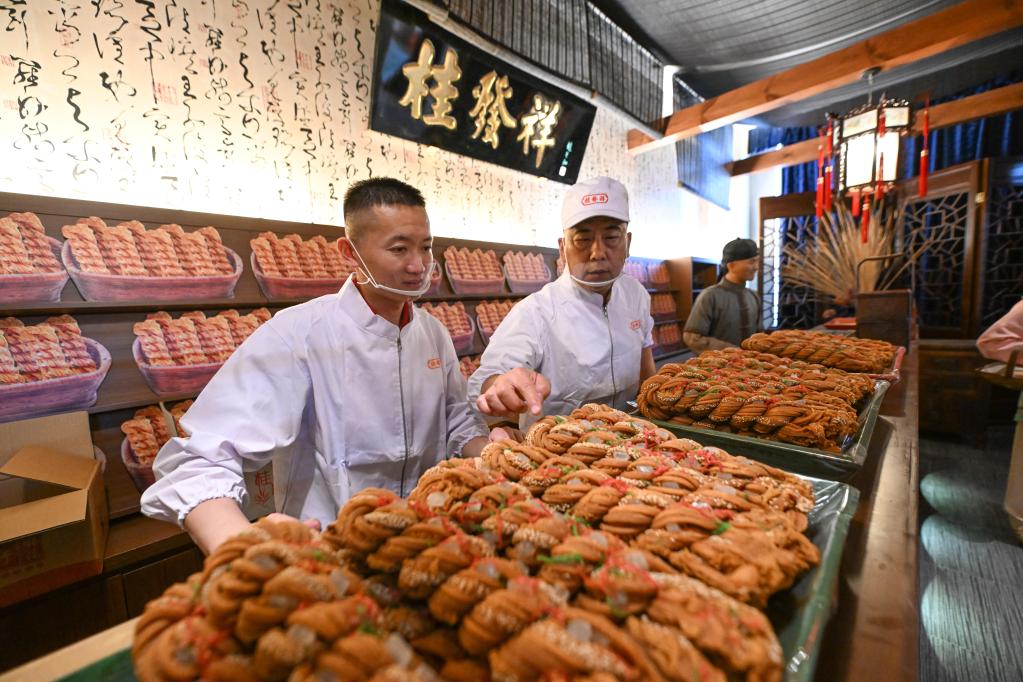
Wang Hongde (2nd L) explains the history of handmade fried dough twists in north China's Tianjin, June 8, 2023. (Xinhua/Sun Fanyue)
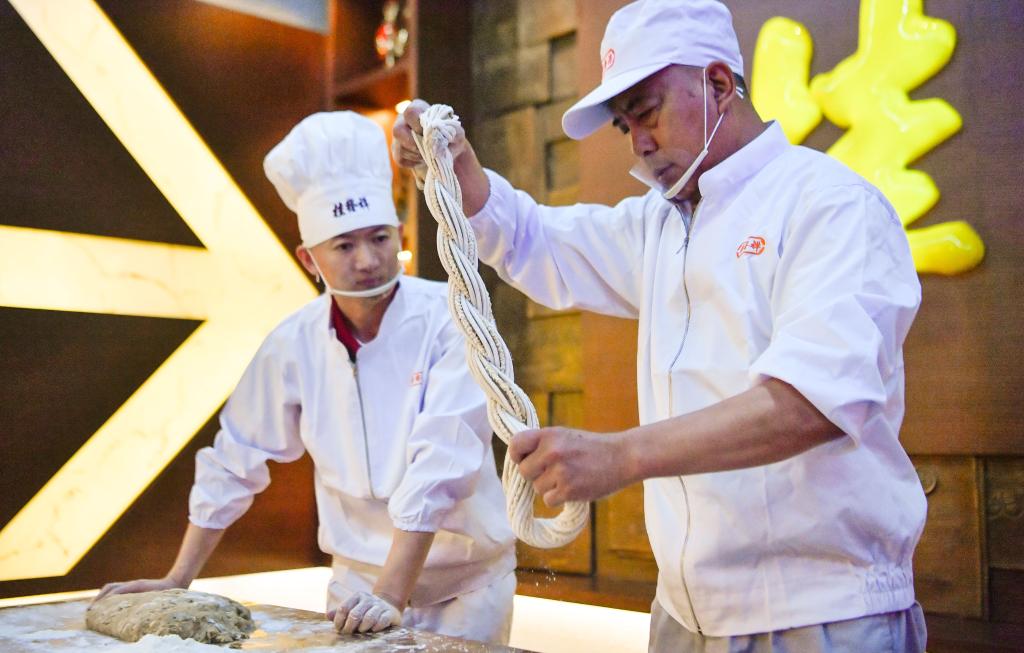
Wang Hongde (R) instructs his apprentice Zhao Baoyang in making fried dough twists in north China's Tianjin, June 8, 2023. (Xinhua/Sun Fanyue)
Mahua, or fried dough twist, is a traditional Tianjin snack. Among various brands, Guifaxiang 18th Street Mahua is the most famous and one of the oldest, and is named after the original location of its former 18th street shop.
Wang Hongde, 57, is the production workshop director of Tianjin Guifaxiang 18th Street Mahua. In 2014, the craft was listed as a national-level intangible cultural heritage. In the 1980s, Wang came to study how to make Mahua with elder masters after he graduated from high school. Wang Hongde can make a giant Mahua weighing 50kg. Zhao Baoyang, 32, one of the best apprentices of him, has become the deputy director of the Mahua production workshop where more young people learn the production skills of the traditional hand-made Mahua.
Produced by Xinhua Global Service



